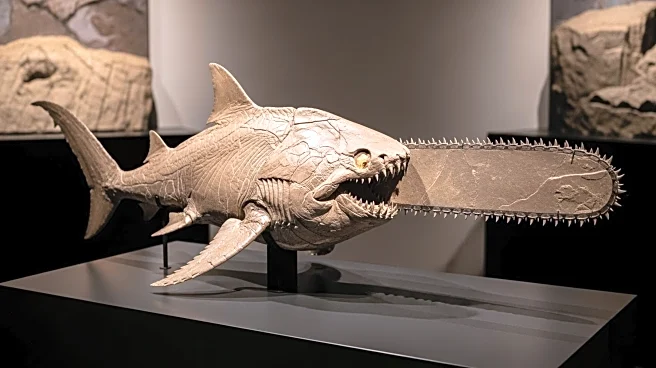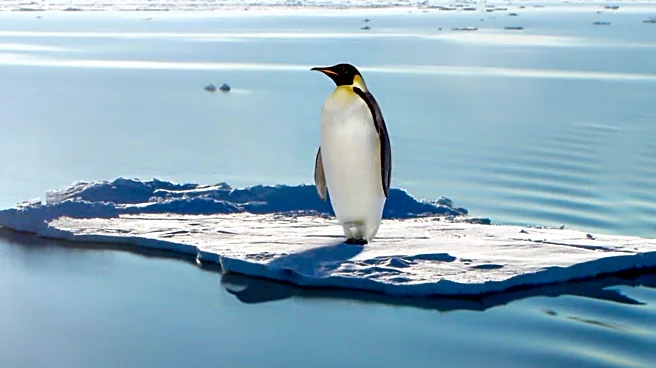What's Happening?
A newly discovered ancient sawshark species has been named after Pochita, a character from the popular manga and anime series Chainsaw Man. The fossil was found in Chile's Bahía Inglesa Formation, located
in the Atacama Region. The naming of the species, Pochitaserra patriciacanalesae, pays homage to both the distinctive chainsaw-like shape of Pochita and Patricia Canales, a Chilean palaeontologist who passed away in 2022. Canales was known for her contributions to the study of marine fossils and ancient marine evolution in Chile. The discovery was reported by local newspaper El Diario de Atacama and has gained attention online, merging scientific recognition with cultural symbolism.
Why It's Important?
The naming of the sawshark species highlights the intersection of science and popular culture, demonstrating how cultural elements can influence scientific endeavors. This event underscores the global reach of pop culture phenomena like Chainsaw Man, which can inspire scientific communities to engage with broader audiences. Additionally, it serves as a tribute to Patricia Canales, celebrating her legacy in marine palaeontology. The recognition of her work through this naming could inspire future generations of scientists in Chile and beyond, fostering interest in palaeontology and marine biology.
What's Next?
The discovery may lead to increased interest in the Bahía Inglesa Formation as a site for palaeontological research, potentially uncovering more ancient species. Researchers might continue to explore the connections between cultural symbols and scientific naming conventions, further integrating pop culture into scientific discourse. This could result in more collaborative efforts between scientists and cultural creators, enhancing public engagement with scientific discoveries.
Beyond the Headlines
The naming of the sawshark species after a pop culture character raises questions about the role of cultural elements in scientific practices. It highlights the potential for cultural symbols to serve as bridges between scientific communities and the general public, fostering greater understanding and appreciation of scientific work. This approach could lead to more inclusive and accessible scientific communication, encouraging diverse audiences to engage with scientific topics.












